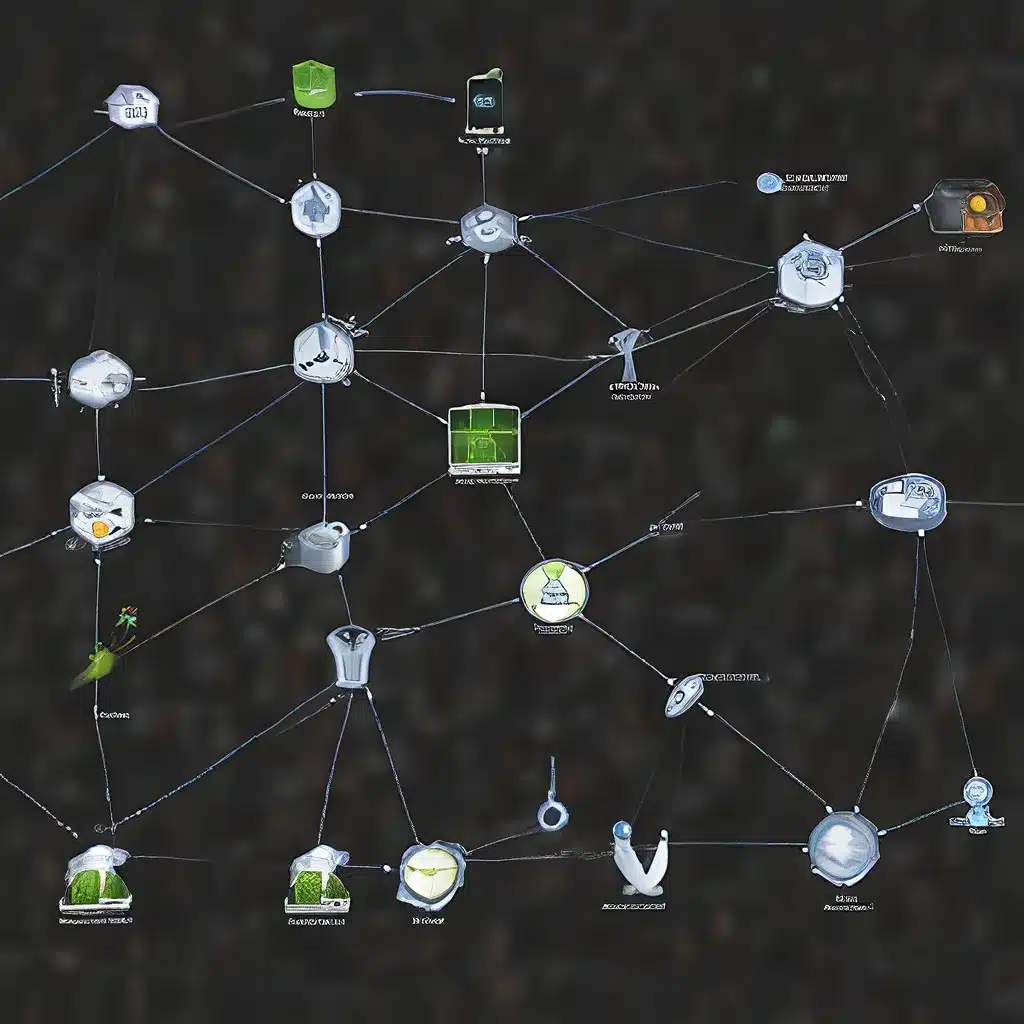
In the rapidly evolving world of sensor networks and the Internet of Things (IoT), the efficient management of energy resources and the balanced distribution of workloads have become crucial considerations. As sensor nodes proliferate and IoT applications become increasingly ubiquitous, the need for innovative strategies to optimize network performance and sustainability has never been more pressing.
The Challenges of Sensor Network Operation
Sensor networks, by their very nature, face a unique set of challenges that set them apart from traditional computer networks. The distributed nature of sensor nodes, often deployed in remote or hard-to-reach locations, places a premium on energy conservation and load balancing. Sensor nodes, with their limited battery life and computing capabilities, must work in harmony to ensure the efficient collection, processing, and transmission of data.
One of the primary challenges in sensor network operation is energy management. Sensor nodes rely on batteries or energy harvesting mechanisms to power their operations, and the depletion of these energy sources can lead to network failures or data loss. Conventional approaches to energy management often focus on reducing individual node power consumption, but this can result in an uneven distribution of workloads, leading to some nodes becoming overloaded while others remain underutilized.
Another significant challenge is load balancing. Sensor networks typically involve a large number of nodes that must coordinate their activities to ensure the timely and reliable delivery of data. However, this coordination can be hampered by factors such as node failures, environmental interference, or uneven distribution of sensing and processing tasks. Unbalanced workloads can lead to network congestion, data bottlenecks, and reduced overall performance.
Distributed Algorithms for Energy-Efficient and Load-Balanced Sensor Networks
To address these challenges, researchers have developed a range of distributed algorithms that aim to optimize the operation of sensor networks. These algorithms leverage the inherent distributed nature of sensor networks to create self-organizing and adaptive systems capable of responding to changing conditions and requirements.
One such algorithm, proposed in a recent study, focuses on energy-efficient and load-balanced sensor network operation. This algorithm, designed for wireless sensor networks, employs a hierarchical clustering approach to organize the network and distribute the workload among sensor nodes.
Hierarchical Clustering Approach
The key components of this distributed algorithm are:
-
Cluster Formation: The sensor network is divided into clusters, with each cluster having a cluster head responsible for coordinating the activities of the cluster members.
-
Cluster Head Selection: The algorithm uses a probabilistic approach to select cluster heads, taking into account factors such as the remaining energy of the nodes and their proximity to the cluster centroid.
-
Intra-Cluster Communication: Within each cluster, the sensor nodes communicate with their cluster head, transmitting the collected data for further processing and aggregation.
-
Inter-Cluster Communication: The cluster heads communicate with each other and with the base station (a central coordinator) to facilitate data transfer and network-level coordination.
Energy-Efficient Operation
The distributed algorithm aims to optimize energy consumption by leveraging the hierarchical clustering approach. Cluster heads, being responsible for data aggregation and transmission, bear a higher energy burden than regular sensor nodes. By rotating the cluster head role among nodes based on their remaining energy levels, the algorithm ensures balanced energy depletion across the network.
Additionally, the algorithm employs techniques such as data compression, in-network processing, and adaptive communication protocols to further reduce the energy consumption of individual sensor nodes. These strategies help to extend the overall lifetime of the sensor network by minimizing the frequency of battery replacements or recharges.
Load Balancing
The hierarchical clustering approach also contributes to load balancing within the sensor network. By organizing the nodes into clusters, the algorithm distributes the sensing, processing, and communication tasks among the cluster members, preventing individual nodes from becoming overburdened.
The cluster head selection process, which takes into account factors like node proximity and remaining energy, ensures that the workload is evenly distributed across the network. This load balancing helps to avoid bottlenecks, network congestion, and uneven resource utilization, ultimately improving the overall performance and reliability of the sensor network.
Applications and Impact of Distributed Sensor Network Algorithms
The distributed algorithms for energy-efficient and load-balanced sensor network operation have significant implications for a wide range of IoT applications and industries. These algorithms can be particularly beneficial in scenarios where sensor networks are deployed in challenging environments or where energy resources are limited.
For example, in environmental monitoring applications, such as wildlife tracking or air quality monitoring, sensor nodes are often deployed in remote locations with limited access to power sources. The energy-efficient and load-balanced operation of these sensor networks can ensure continuous data collection and transmission, providing valuable insights for environmental conservation efforts and policy decision-making.
Similarly, in industrial IoT applications, such as predictive maintenance or smart manufacturing, sensor networks play a crucial role in monitoring equipment performance and optimizing production processes. The distributed algorithms can enhance the reliability and efficiency of these sensor networks, minimizing downtime and maximizing productivity.
Conclusion
As the world becomes increasingly interconnected through the proliferation of sensor networks and IoT technologies, the efficient and reliable operation of these systems has become paramount. The distributed algorithms for energy-efficient and load-balanced sensor network operation represent a significant step forward in addressing the unique challenges faced by these distributed systems.
By optimizing energy consumption, balancing workloads, and promoting self-organizing and adaptive behavior, these algorithms contribute to the sustainability, resilience, and performance of sensor networks across a wide range of applications. As the sensor network and IoT landscape continues to evolve, the insights and strategies presented in this article will play a crucial role in shaping the future of these transformative technologies.
Explore the possibilities of sensor networks and IoT at https://sensor-networks.org/, where you can discover the latest advancements, connect with industry experts, and stay informed on the cutting edge of this rapidly advancing field.